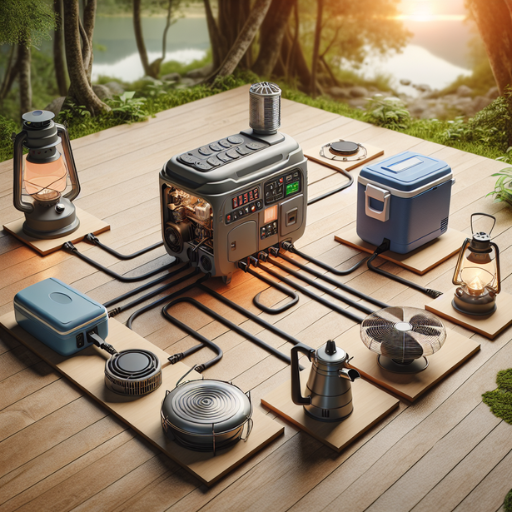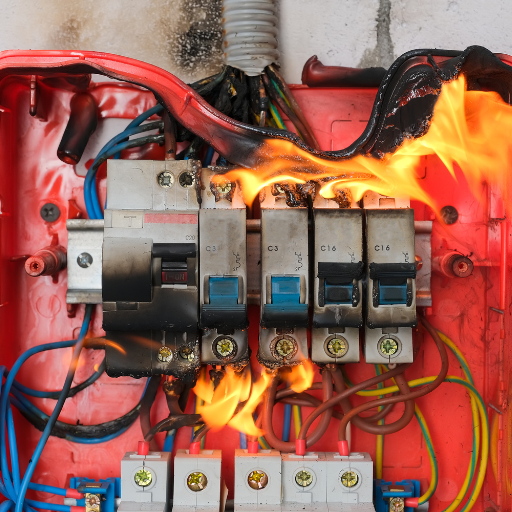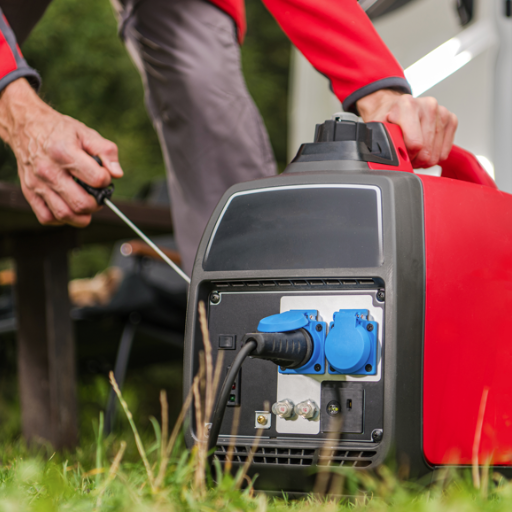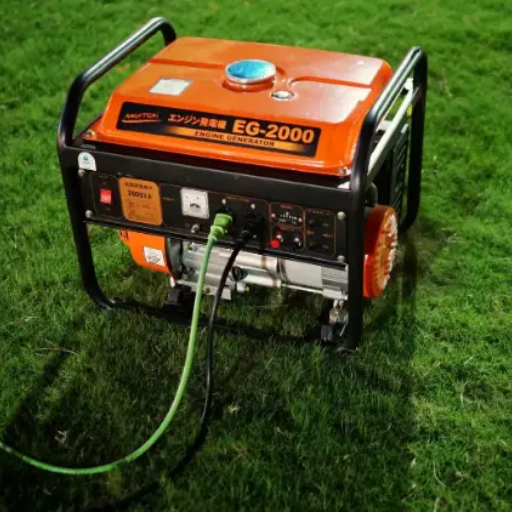With power generators, a thorough knowledge of their limitations is essential for safety, efficiency, and long life. Overlooking a tiny detail, such as overloading a generator, might result in serious ramifications in terms of performance, which could befuddle the equipment, or worse, put one’s life in danger. This article discusses the anatomy of power generators, what occurs once they are overloaded, and preventive actions that can be taken to stop such occurrences. So, whether you are just an owner who depends on this device during a blackout or an expert handling machine installations at an industrial level, this can help you to correctly use your generator and thereby avoid unnecessary mishaps. Stay glued as we reveal some useful clues, expert views, and strategies that can prevent your generator from breaking down.
Understanding Generator Overload

Generator overload is the act of an electrical load exceeding the rated capacity of the generator. Such an excessive load causes the generator to overheat, eventually damaging its internal components like the alternator, its wiring, or the engine. Apart from this, an overloaded generator can trip breakers or operate inefficiently, finally shutting down to protect itself.
Always check the wattage for all devices being connected, and make sure it is within the maximum capacity rated for the generator, so it will never be overloaded. Cleaning and inspecting the generator regularly also leads to its best performance and a lower chance of generator problems caused by strain.
What is Generator Overload?
Generator overload takes place when the electrical demand from connected devices exceeds the maximum power output of the generator. Such a situation leads to serious trouble, such as overheating, loss of efficiency, and permanent damage to components, power-consuming components such as alternators, and engines. The term “overload” is more easily conceptualized if we think of a generator working to keep supply and demand balanced; when demand exceeds supply capacity, the generator is forced to go beyond its working limits and, therefore, will be subjected to strain and consequent failure.
To avoid overload, first learn to calculate the combined wattage of all your devices concerned right before operation; make sure the generator you choose is suited for your work requirement and upkeep at intervals for best condition. The newer generation of generators has breakers combined within to help prevent damage in the event of an overload, but avoidance of that situation comes down to foresight.
How a Generator is Overloaded
A generator is overloaded whenever the electrical demands from connected devices go beyond the generator’s maximum capacity. Mostly, such an event happens when a large number of high-watt appliances and equipment get connected simultaneously, or when an unforeseen power surge occurs. This type of overload would bring the generator into an unsafe temperature sensitivity state, would then reduce the efficacy of functioning, and might even bring about an everlasting shame of the generator itself and devices attached thereto.
According to ropes and resistance from one of the most common causes: power requirement miscalculation by users. To counteract the problem, power calculators can be used for each item, or else the manual of the generator can guide in estimating the correct wattage required. Another strategy is to set high-demand appliances to work one at a time, and use energy-efficient appliances as well. Armed with this knowledge, the longevity of your generator and the safety of your connected systems are guaranteed.
Wattage and Load Management
Proper wattage calculations are imperative in making sure that your generator is used safely and efficiently. It was noted recently that each appliance in a household has a certain wattage requirement that constitutes an individual load on your generator. For instance, a simple refrigerator consumes in the realm of 600-800 watts while running and an air conditioner can draw anywhere from 2,000 to 5,000 watts, depending mostly on its size. Portable power calculators or load management apps can assist in simplifying the task of making these estimates so that you do not overtax your generator.
As per the latest recommendations on energy efficiency, it is possible to decrease wattage demands by somewhere between 30 and 50 percent when operating LED lights, high-efficiency appliances, and advanced HVAC systems. Avoiding overloading can be attained by staggering the operations of high-power devices, that is, making sure not to start them all at once. Regularly checking wattage labels and familiarizing oneself with the allowed peak power consumption of the appliances are two key habits to safeguard a system and foster the survival of laboratory equipment in parallel.
Making sure that the total wattage of all devices being operated at any given time is below the maximum wattage rating of the generators is a sure way to keep your generator in working condition for many years. It also ensures reliability in energy sources for critical areas, especially during power outages. Time invested in understanding these basic tenets, energy-conscious practices, and a little energy-saving can go a long way in making the landscape resource-efficient and safe to manage.
Signs of an Overloaded Generator

- Frequent Tripping or Shut Off
The generator itself shuts off when overloaded, or the trip circuit breaker closes against damage.
- Unusual Noises
Any source of loud, abnormal sounds, such as knocking or sputtering, can strain the generator.
- Flickering or Dim Light
Power fluctuations, such as flickering or dimming lights, indicate that the generator is not able to supply the demand.
- Overheating
Excessive heap from the generator or its components indicates the generator is operating beyond its ability.
- Lower Performance of Devices
Devices and appliances are able to work improperly, at reduced efficiency, or to be shut down by failing under the power supply.
Identifying Symptoms of Generator Overload
- Unusual Sounds or Vibrations
An overloaded generator may start making strange sounds like grinding or knocking, or cause excessive vibration. This is one of the commonly encountered problems by customers and should be considered a priority to be fixed.
- Circuit Breakers Trip Frequently
On overload, the circuit breaker or some exporter’s safety mechanism trips often. It is a form of protection, but it should clearly show that the generator is working beyond its limit.
- Burning Smell or Smoke
With the generator under hard load, intense smells of burning or smoke are emitted, and this poses either functional inefficiencies or safety hazards.
- Shutdown or Failure to Start
Many users try to understand the cause of an unexpected shutdown of the generator during heavy load. Very often, this is caused by overloading because it protects itself against damage. Similarly, an overloaded system fails to restart.
Knowing how to identify the symptoms of the overload and acting on reducing the load on the generator promptly will guarantee a long life and safe use of the generator. Maintenance on time and load management throughout its use are solutions to these typical problems.
Performance Failures to Watch For
The most prominent performance failure has become the engine finishing its operation by way of stalling. This is where fuel quality could be blamed, with contaminated or old fuel impeding the efficient combustion process. Other complaints often include erratic power generation, which could be due to old spark plugs, blocked air filters, and dirty or faulty wiring disrupting electrical flow. According to current trends on Google, users mostly ask whether overheating is the cause of generator shutdowns. Generation shutdown by overheating is usually the result of poor ventilation, low coolant levels, or overworking the system, especially if the heavy load is maintained for a long time. Addressing these failures can only be done effectively with an intensive maintenance approach complete maintenance program involving regular inspection, timely replacement, and tracking of system parts with obvious signs of impending deterioration. Staying on top of these issues only serves to optimize the performance and reliability of your generator.
Effect of High-Demand Appliances
High-demand appliances like air conditioners, refrigerators, water heaters, and washing machines put power systems, including backup generators, under a great deal of stress. These appliances require a substantial surge of power at startup, and in doing so, they can place an undue burden on smaller or poorly maintained generators. Extended duration of usage could result in overheating, thus increasing the fuel consumption rate, and even system failure should the generator be poorly designed to support the given loads.
To reduce these effects, the combined wattage of the high-demand appliances needs to be calculated, and the generator capacity must suffice, with additional capacity for safety. Second, staggered operation of appliances or purchases of more energy-efficient models can relieve the system considerably and extend its life even during periods of heavy demand.
Risks and Consequences of Overloading Your Generator

Overloading a generator can have serious consequences and risks. One immediate danger lies in overheating, which destroys internal components of the machine and causes an unexpected shutdown. Continuous overloading extends the blasted-for situation until permanent damage is inflicted on it and its entire lifespan is shortened. It can become a fire hazard accident waiting to happen. Should an overloaded generator at least provide unstable power, this will, in turn, damage the appliances and electronics connected. Such issues start being averted by observing the rated capacity of the generator in use and following proper guidelines in the application.
Equipment Damage
Equipment damage is often a concern, especially when the operator is beyond the designed capacity of the machine. Overheating is the most common cause of such damage, with another factor being exposure to adverse environmental conditions. Hence, lack of maintenance will further aggravate this situation. It must be followed by proper guidelines on storage as given by the OEM (Original Equipment Manufacturer). Now, from a technological standpoint, there are sensors and monitoring systems that can be retrofitted onto the equipment to warn of early detection of operational anomalies, so that the user can take action before the condition worsens. In this way, the equipment gets maintained well and stays active, which in turn extends the equipment’s lifespan, while maintenance also helps in reducing downtime and the operating cost of the equipment, so as to maintain an optimum level of performance.
Fire Hazard and Safety Risks
Fire hazards constitute a greater menace to residences and industrial works often prompted by flammable materials conjoined with an electrical fault or poor safety measures. Recent statistics place about 13% of demises due to residential fires as a result of electrical faults across the USA, thereby accentuating the importance of proper wiring, circuit breakers, and maintenance of devices. Wrong storage arrangements of flammable liquids or aerosols further compound the dangers of fires, especially in poorly ventilated areas.
Prevention measures will take up the challenge of counteracting these perils. Testing smoke alarms regularly, along with setting down an elaborate fire evacuation plan and ensuring necessary fire extinguishers remain in good working condition, form some of the key safety measures. Furthermore, modern fire detection systems with smart technology facilitate real-time monitoring and alerts, thus enhancing quicker response, which potentially could save lives. Integrating such technologies will, therefore, go a long way in protecting the environment of the facing party.
Long-Term Effects on Generator Performance
The long-term performance of a generator is influenced by many factors: maintenance, operating conditions, and component quality. The literature revealed that constant wear and tear on these generators due to extended periods of operation slowly wears away at some key components, such as the alternator, fuel system, and engine parts. Improper maintenance in the form of irregularity in oil changes or filter replacements, for instance, further aggravates this condition, making the generator less efficient and more prone to failure with time. Environmental conditions, such as dust in the atmosphere, humidity, and in some cases extreme temperature, further play on the performance by accelerating corrosion and hence the degradation of components.
Technological advancement and greater adoption of smart systems have seen an increased life span for generators to date. The incorporation of features such as real-time monitoring enables users to track performance-related data and detect issues early while adjusting maintenance schedules in a proactive manner. Testing and calibration also remain very critical in tracking the optimal performance of the respective generators as time lapses. They also ensure mitigation of several of the long-term effects if performed according to manufacturer recommendations, combined with modern diagnostic equipment.
Preventing Generator Overload

- Calculate Your Power Needs
Establish how much wattage all devices that you plan to connect would be rated for. This number must never exceed the rated capacity of the generator.
- Essential Devices Take Priority
Power only those devices that are really essential in order to reduce strain on the generator. Never run all devices at a time if their total demand is very close to or equal to the generator’s limits.
- Load Management
Turn devices one by one, starting with the highest power loads. This reduces sudden increases in generator load.
- Regular Maintenance
Regular inspections and servicing of the generator shall keep the unit well-maintained. Certainly, a well-maintained generator will run efficiently and be less susceptible to overloading or underloading.
- Manufacturer’s Recommendation
Consult the user manual at all times for instructions regarding load capacity and operational limits. Following such letters is extremely important for safe and efficient operation.
Now you can safely operate the generator and efficiently stop any trouble arising from generator overloads.
The Best Practices for Safe Use
- Maintain Constant Inspection
Prevention is key when it comes to maintenance. Check oil levels periodically, the air filter, spark plugs, etc., to make sure the generator is working perfectly fine. Recent statistics point out that a high percentage of the failures in the operations of generators are attributed to poor maintenance, so the generator really needs to be serviced routinely.
- Position Your Generator Properly
Ensure your generator sits outside, in a dry and well-ventilated place, with at least a 20-foot setback from doors and windows, to avoid instances of carbon monoxide poisoning. The EPA states that improper placement is a leading cause of carbon monoxide incidents from generators.
- Avoid Overloading the Generator
Any load beyond the rated capacity of a generator will damage it so seriously that the connected load may suffer grievous damage as well. Calculate your total power requirements and ensure that they theoretically do not exceed that of the generator capacity; it is further advised that the load be automatically distributed using transfer switches to minimize the strain and risk during operation.
- Use the Best Fuel Available
The engine should always be supplied with the fuel type that the manufacturer recommends, and never should old or contaminated fuel be used. Good quality fuel, on the other hand, prevents the clogging up or damage to the engine, which are common problems associated with dirty fuels.
By following these best practices and those suggested by experts, you increase the useful life and efficiency of your generator while ensuring safety remains at the forefront during every instance of its use.
Manage Load Using a Transfer Switch
A transfer switch is necessary for safely connecting a generator to the electrical systems in your home or establishment. Acting as an intermediary between the generator and the main electrical panel, the transfer switch prevents the generator from backfeeding the utility power lines, a situation that can be hazardous to utility workers and also cause damage to the utility system.
When installed correctly, a transfer switch effectively lets you control your load by selecting which circuits are powered by the generator. This allows critical systems such as heating, refrigeration, and medical equipment to stay up and running through an outage without overwhelming the generator. While it is best to use the load balancing feature to evenly distribute power across prioritized appliances, installing a transfer switch compliant with local electrical code is of utmost importance for both safety and efficiency. Consultation with a licensed electrician is highly recommended to ensure proper installation. Besides making your generator work better, a transfer switch also makes your electrical system safer.
Setting Up Overload Protection
To set up overload protection, I would start by identifying the total power requirements of the appliances I plan to connect to the generator. Then, I would ensure that the generator and transfer switch are equipped with built-in circuit breakers or overload protection features. If needed, I’d consult a licensed electrician to verify that the system is properly configured to handle the load safely and efficiently.
Reference Sources
- Central Washington University – Generator Safety
-
- Generator Safety
- This page discusses the risks of overloading a generator, including potential damage to the generator and connected equipment.
- Mississippi State University Extension – How to Safely Use a Generator
-
- How to Safely Use a Generator
- Provides guidelines on avoiding generator overload to protect appliances and ensure safe operation.
- University of California, Berkeley – Power Failure Fact Sheet
-
- Power Failure Fact Sheet
- Highlights the dangers of overloading circuits with additional power sources, including fire risks.
- University of Florida IFAS Extension – Portable Generator Safety Tips
-
- Portable Generator Safety Tips
- Discusses the consequences of overloading portable generators and offers safety recommendations.
- University of Illinois – The Power Grid Quick Start Guide
-
- The Power Grid Quick Start Guide
- Explains how system operators monitor and manage overload risks in power systems.
Frequently Asked Questions (FAQs)
What are the signs of generator overload?
When a generator is overloaded, several signs may indicate an overload condition. One of the most apparent signs is a significant drop in voltage output, which can lead to connected appliances malfunctioning. Additionally, the generator may start to overheat, triggering the overload protection device to trip. If you notice that the breaker trips frequently or the generator emits unusual noises, these are also signs of overload. It’s crucial to monitor the wattage being used; exceeding the rated load capacity can cause the generator to shut down. Regularly checking the generator can help you identify these symptoms early and prevent potential damage.
How can I prevent generator overload?
To prevent generator overload, it’s essential to understand the load on a generator and its maximum power capacity. Start by sizing your generator appropriately for your needs, taking into account both running watts and starting watts of your appliances. Using a transfer switch can help manage which appliances are powered, ensuring you do not overload the generator. Additionally, unplugging high-demand appliances when they are not in use can help reduce the overall load. Regular maintenance, including checking internal components and ensuring proper ventilation, can also help prevent overload situations. Always refer to the owner’s manual for specific guidelines on managing load and avoiding overload.
What happens when a generator is overloaded?
When a generator is overloaded, several issues can arise, potentially leading to severe damage. The most immediate effect is that the generator may shut down automatically as a protective measure. If the overload continues, it can cause overheating, damage the internal components, and significantly reduce the generator’s lifespan. In some cases, an overloaded generator can lead to a short circuit, which poses safety risks such as electrical fires. To avoid these consequences, it’s crucial to monitor your power usage closely and ensure that the generator is not handling more wattage than it can supply. Following load management practices can help mitigate the risk of overloading.
What should I do if my overloaded generator shuts down?
If your generator shuts down due to overload, the first step is to unplug all connected appliances to reduce the load on the generator. Next, allow the generator to cool down, as it may have overheated during the overload condition. After it has cooled, you can locate the overload reset button, if available, to restart the generator. It’s advisable to check the generator’s wattage output and ensure it is within the rated load capacity before restarting. If the generator continues to shut down, consult the owner’s manual or contact a qualified electrician for further assistance. This will help protect your generator from permanent damage and ensure safe operation.
Can running a generator with high-demand appliances cause issues?
Yes, running a generator with high-demand appliances can lead to significant issues, including overload. These appliances often require a substantial amount of starting watts, which can exceed the generator’s load capacity. When this happens, the generator may struggle to supply adequate power, resulting in voltage drops and potential shutdowns. To prevent this, it’s essential to calculate the total wattage needed before connecting appliances to the generator. Implementing load management strategies, such as staggering the use of high-demand appliances, can also help avoid overload. Additionally, ensuring that the generator is properly maintained and sized for your needs will help it handle the load effectively.
